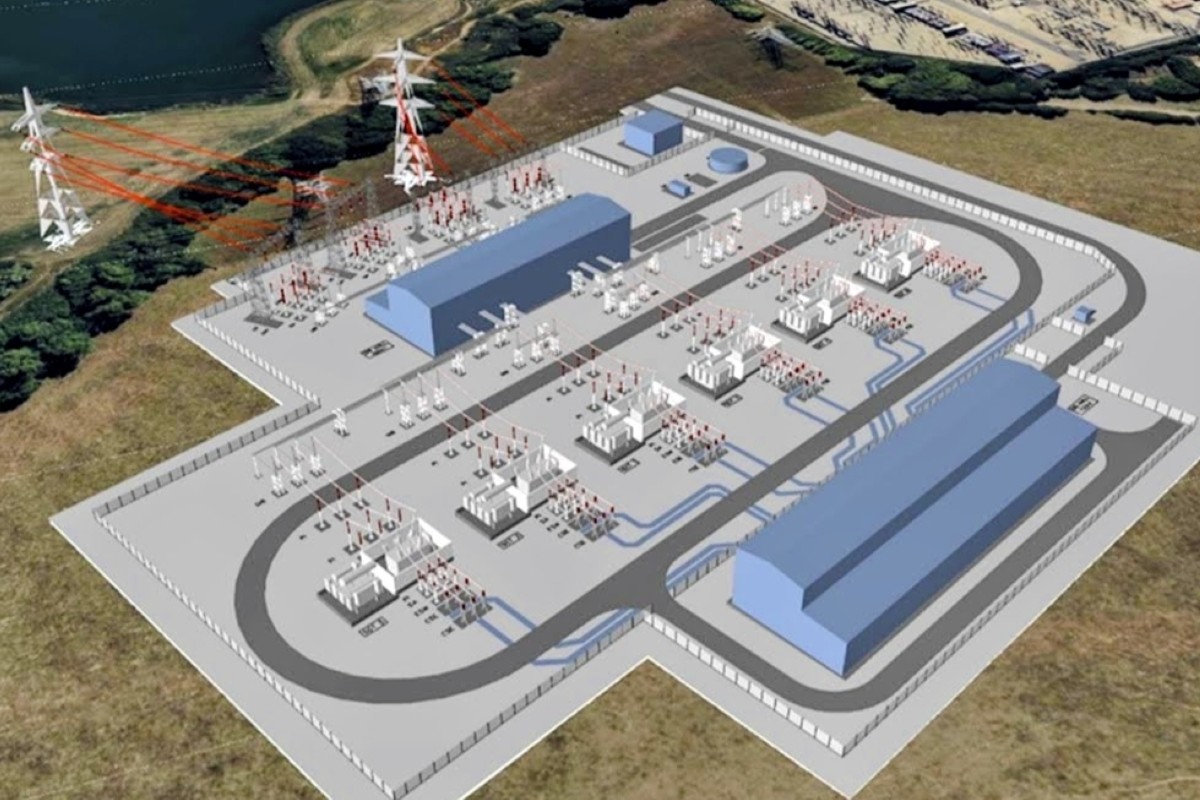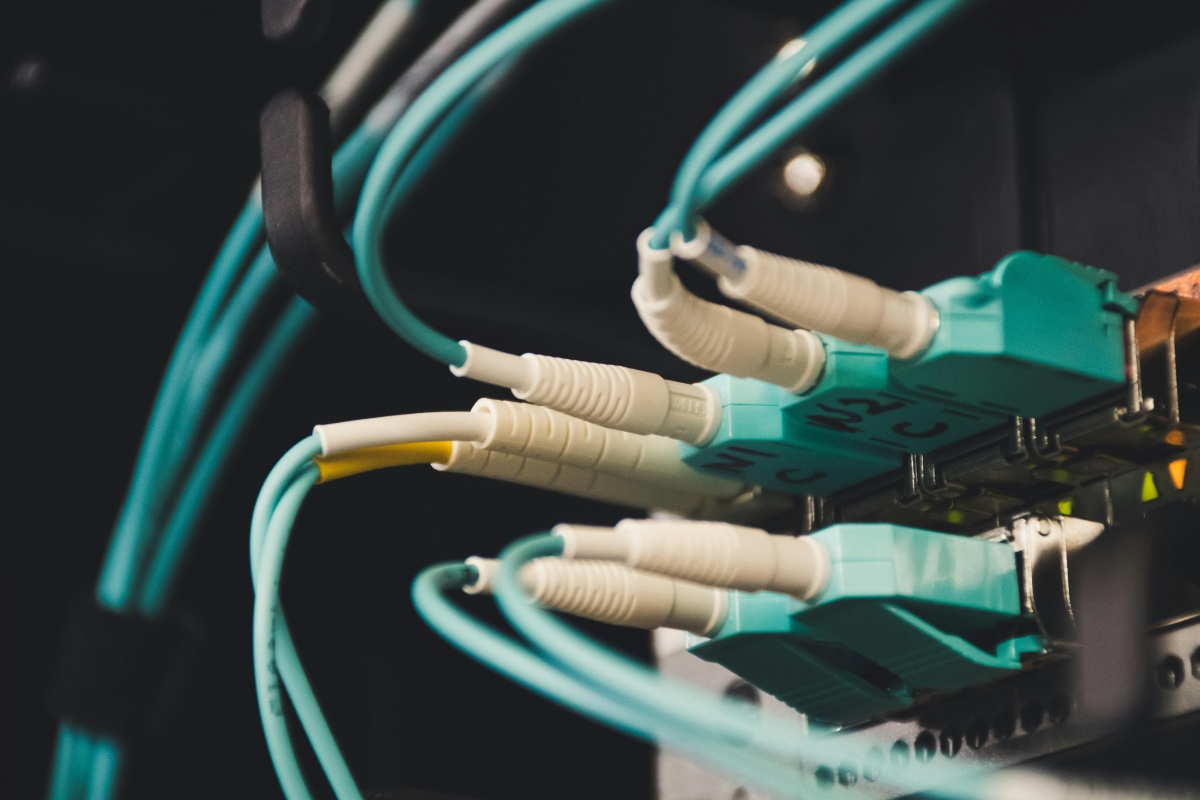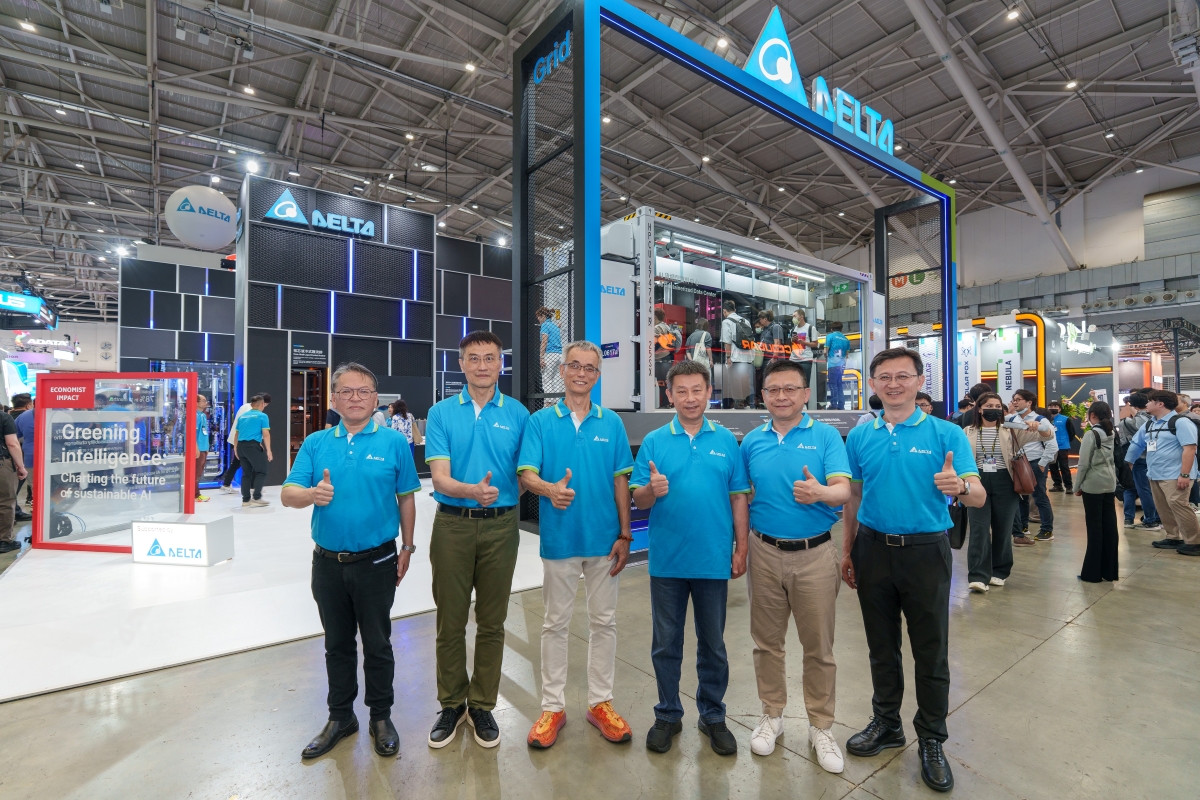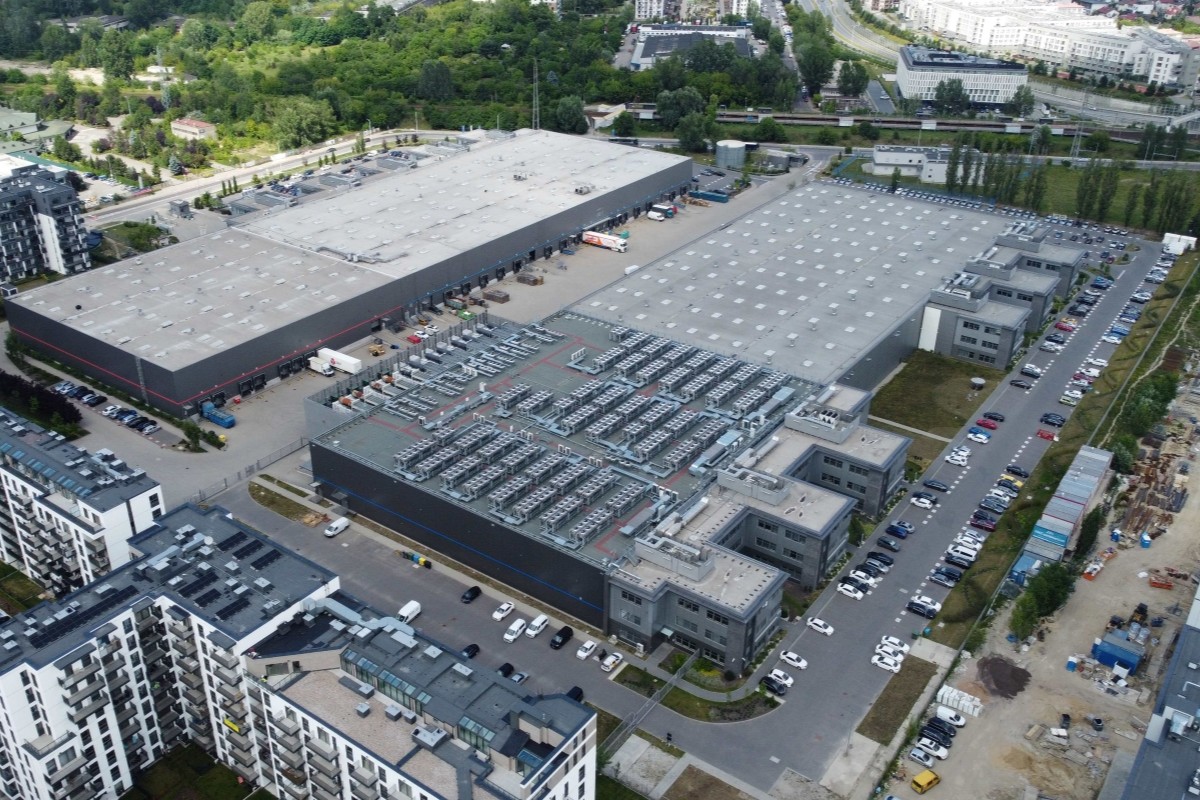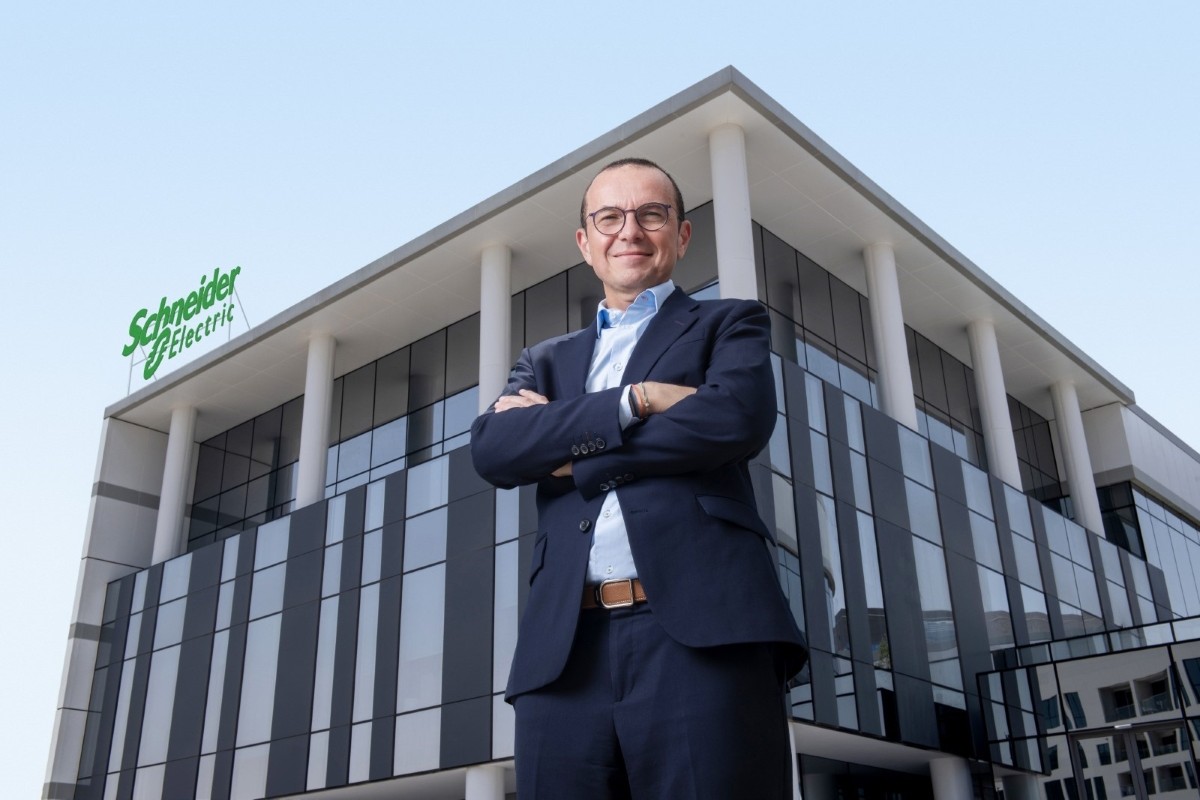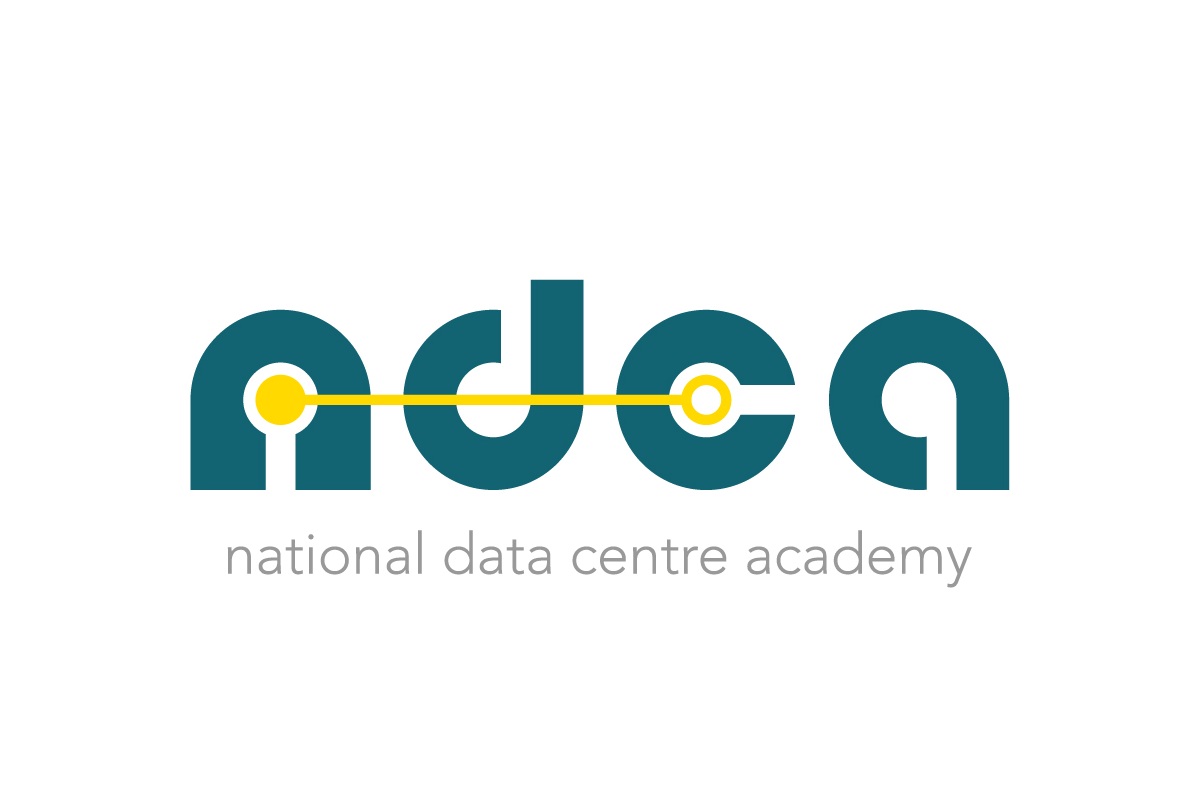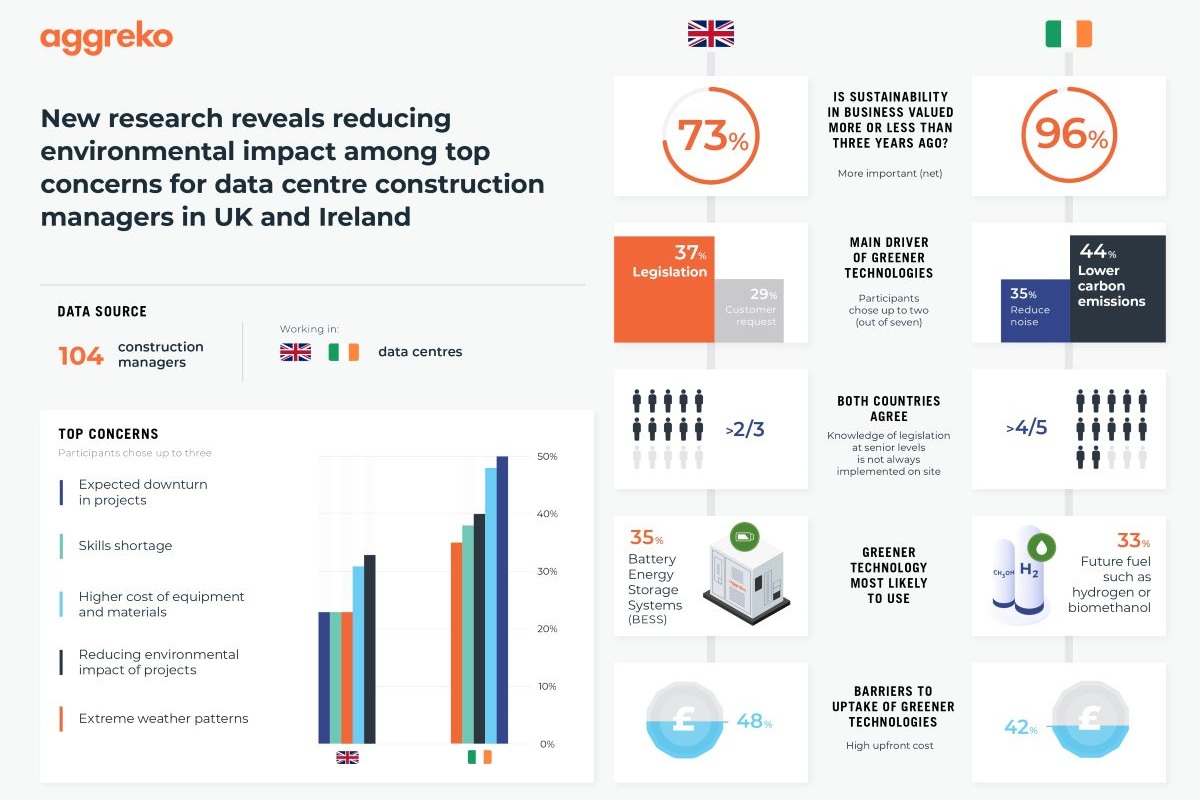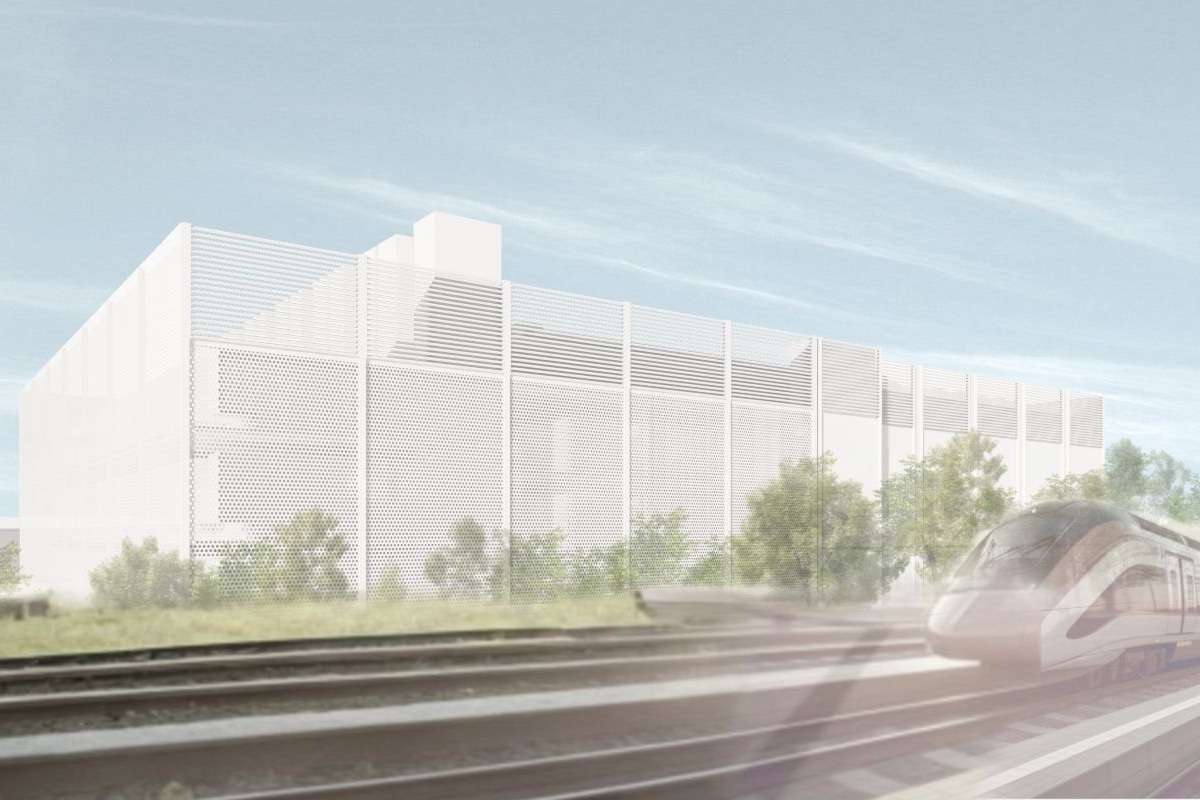Data Centre Build News & Insights
Data Centre Build News & Insights
Data Centre Projects: Infrastructure Builds, Innovations & Updates
Data Centres
News
National Grid starts work on new substation
National Grid, the UK's largest electricity distribution network, is starting work on its new Uxbridge Moor substation in Buckinghamshire which will connect over a dozen new data centres to its network.
The new site forms part of National Grid’s upgrade to its transmission network to meet growing demand for electricity, ensuring it can continue to support the growth of new sectors such as data centres as well as the economic and employment benefits they can bring.
The site will feature two substations – one 400kV and one 132kV – both of which will be indoor gas-insulated facilities (GIS), reducing the footprint of the development by around 70% and minimising its impact on the environment.
Uxbridge Moor will be among the first GIS substations in the country to be free of sulphur hexafluoride (SF6), a commonly used electrical insulator that is also a potent greenhouse gas. Using an alternative insulating gas means the project marks another key step towards National Grid’s ambition to reduce SF6 emissions from its network by 50% by 2030.
Principal contractor Murphy will build the Uxbridge Moor substation, as well as delivering ancillary facilities, underground cabling, and associated work to connect the 400kV substation to the nearby overhead transmission line.
National Grid is planning £35 billion of investment between 2026 to 2031 to connect both large sources of demand (such as data centres and gigafactories) and new sources of electricity generation (such as wind and solar).
The requests from data centres to connect at Uxbridge Moor will require around 1.8GW of new capacity, equivalent to adding a mid-sized city to the grid on the outskirts of London. When built, it will be the largest new substation on National Grid’s network by gigawatt capacity.
The new substation site borders National Grid’s existing Iver 400kV substation in Buckinghamshire, which has reached capacity and cannot be expanded to meet the demand from data centres and other customers for connections in the area.
Energy Minister Michael Shanks says, “Upgrades to the electricity network like this are at the heart of building the industries of our future and support our Plan for Change to deliver economic growth and skilled jobs across the UK.
“It comes as we progress our reforms to the grid connections queue that will speed up the time it takes to get high-growth firms, like data centres and AI hubs, plugged into the grid, while also fast-tracking projects that will scale up clean, homegrown power by 2030.”
Laura Mulcahy, Project Director at National Grid Electricity Transmission, comments, “Our new Uxbridge Moor substation will provide vital access to power for data centres that are at the heart of Britain’s innovation and economic growth. It will enable new jobs and investment in Buckinghamshire, and will support the UK's digital future.
“Alongside these significant benefits, we are working to keep the substations’ environmental impact to a minimum. By using the latest SF6-free, gas-insulated switchgear, we’re reducing the size of this crucial site by around 70% and ensuring its technology is sustainable and resilient long into the future.”
Liam Corr, Managing Director of Energy at Murphy, states, “Since 1951 Murphy has been a leading provider of innovative and integrated energy solutions – today we support groundbreaking transmission and distribution projects across the four countries in which we work.
“We are proud to be delivering this project in the UK’s capital and building on our strong working relationship with National Grid to help to ensure energy security for decades to come.”
For more from National Grid, click here.
Joe Peck - 2 June 2025
Data Centre Build News & Insights
Data Centre Infrastructure News & Trends
Data Centres
Renewables and Energy: Infrastructure Builds Driving Sustainable Power
Sustainable Infrastructure: Building Resilient, Low-Carbon Projects
GBI launches 'Green Globes Data Center Campus Certification'
The Green Building Initiative (GBI), a non-profit organisation that focuses on improving the built environment and reducing climate impacts, has announced the release of the 'Green Globes Data Center Campus Certification', tailored to the unique operational and infrastructure demands of data centre campuses. The offering, developed in partnership with Compass Datacenters, aims to provide data centre owners and operators with a way to assess and certify the sustainability of multiple buildings on a site.
“Digital infrastructure is the backbone of today’s society, and it’s critical that we design, construct, and operate these spaces with sustainability at the forefront,” says Vicki Worden, CEO of GBI. “The Green Globes Data Center Campus Certification empowers operators to optimise environmental performance across entire campuses while meeting evolving stakeholder expectations and regulatory requirements.”
As demand for energy-intensive digital infrastructure continues to grow, the new certification intends to support mission-critical facilities working to reduce environmental impact and achieve long-term resilience. The certification recognises the interconnected nature of data centre campus operations and attempts to make it possible to evaluate redundant infrastructure and systems to improve efficiency and sustainability.
“By standardising our campuses, we reduce digital, procedural, and physical waste to scale faster. GBI is wisely adopting that mindset with the campus-wide certification, making it possible to streamline documentation and certification across data halls and buildings into a single, unified process,” comments Amy Marks, SVP Innovation for Compass Datacenters. “Our co-development of this process with GBI underscores our belief that doing the right thing is good business—and it advances continuous improvement across materials, energy and water use, and community engagement.”
GBI Green Globes is a nationally recognised certification that assesses energy and water efficiency, site impact, emissions reduction, material selection, and resilience at any stage of the building lifecycle. The Green Globes process includes a third-party, on-site assessment by a dedicated Green Globes Assessor (GGA) and may qualify projects for financial incentives and compliance with local sustainability mandates.
Features of the certification include:
• Campus Assessment: Evaluates performance across three or more buildings sharing common design and infrastructure.• Certification Process: Replication of documentation and questionnaires across buildings.• Assessment Support: Consistent assignment of a Green Globes Assessor across projects when possible.• Pricing: Discounts on registration, specification review (optional), assessment, and travel.• Recognition & Promotion: Certified campus plaques, custom GBI-issued press releases, and social media promotion.• Actionable Insights: Personalised improvement recommendations from the assigned Green Globes Assessor.
Eligibility for campus certification requires GBI organisational membership at the Stewardship Level or above and completion of a 'kickoff consultation' with GBI. The program is now available for new construction campuses that include three or more new construction buildings (up to 18 months of occupancy or less than 12 months of consecutive utility data) and will soon be released for existing buildings.
For more from GBI, click here.
Joe Peck - 29 May 2025
Data Centre Build News & Insights
Data Centres
Events
Renewables and Energy: Infrastructure Builds Driving Sustainable Power
Sustainable Infrastructure: Building Resilient, Low-Carbon Projects
Delta presents solutions at Computex 2025
Delta, a leader in power management and smart green solutions, today unveiled its comprehensive solutions for the AI era with a focus on sustainability under the theme “Artificial Intelligence x Greening Intelligence.” The showcase features the newly-launched AI containerised data centre solution designed for edge computing. This 20-foot container, which integrates power, cooling, and IT equipment, is on display at Delta’s booth.
Delta is also announcing new certification for the in-rack CDU solution for NVIDIA GB200 NVL72. Additionally, in response to the growing power demands of AI computing, the company is introducing an 800V High Voltage Direct Current (HVDC) power architecture solutions for AI data centres, along with a microgrid solution that addresses grid resilience.
Ping Cheng, Delta’s Chairman and CEO, says, “With the rapid expansion of AI applications, industries worldwide are facing the dual challenge of meeting computing demands while maintaining sustainability. As a global leader in power and thermal management, Delta strives to enhance the energy efficiency of its products and optimise power architectures to reduce the stage of energy conversion and minimise total energy loss. For enterprise users looking to adopt AI, we also address the need for rapid and simplified deployment by offering a highly integrated containerised data centre solution, including for NVIDIA GB200 NVL72. Through innovative technology, Delta is helping drive the development of sustainable AI.”
Benjamin Lin, President, Delta Electronics India, comments, “As India rapidly advances toward becoming a global technology and data hub, the demand for energy-efficient, AI-ready infrastructure is accelerating. Delta’s containerised data centre and HVDC solutions represent our commitment to driving digital innovation while ensuring sustainability at scale. These next-generation technologies not only empower faster deployment and lower operational costs, but also align with India’s green data centre and Digital India missions. We are proud to contribute to building a resilient digital future, where high-performance computing and clean energy solutions go hand in hand.”
As part of its HVDC solution, Delta showcases its Core Shell Liquid-Cooled Busbar and HVDC Air-Cooled Busbar, supporting up to 50VDC/8000A and 800VDC/1000A power capacity with the intent of ensuring stable system operation. In advanced liquid cooling, the company's liquid-to-liquid cooling systems can provide up to 1,500 kW of cooling capacity. It also features rack-level coolant distribution units (CDUs) with cooling capacity up to 200kW, along with liquid-cooled cold plate modules designed for GPUs and CPUs.
Computex 2025 will be held from 20 to 23 May at the Nangang Exhibition Center. Delta’s booth is located in Hall 1, 4F, stand No. L0617a.
For more from Delta, click here.
Joe Peck - 28 May 2025
Data Centre Build News & Insights
Data Centre Projects: Infrastructure Builds, Innovations & Updates
Data Centres
News
Greykite and White Star deliver Poland's largest data centre
Greykite, an independent European real estate investment firm, its affiliates, and White Star Real Estate have announced several milestones in their Digital Ursus data centre conversion project in Warsaw, including the signing of a long-term lease with a global leader in data centre solutions. This conversion marks the next phase in the site’s transformation from a logistics asset into a data centre hub.
As part of this data centre conversion project, Digital Ursus has successfully secured increased power capacity at the 20,000m² project from 18MW currently to 65MW over the next year. The tenant has committed to a long-term lease with significant investment planned to scale the existing operations on-site.
Located 8km from downtown Warsaw and 6km from Chopin Airport, the site’s positioning highlights its role as a node in Europe’s rapidly growing data centre landscape.
The Polish data centre market is expected to triple by 2029, driven by rising demand for digital services, cloud computing, and colocation solutions. Warsaw remains the key hub, accounting for nearly 70% of the country's commercial colocation and hosting capacity. The rapid growth in data processing is fuelling a growing need for robust digital infrastructure.
Michael Abel, Founder and CEO of Greykite, comments, “We are very pleased with the fast value creation that we have been able to showcase in our Digital Ursus data centre project – having signed a long-term lease with a top data centre operator, relocated multiple existing tenants, and increased the power to 65 MW, all within a period of six months. From the outset, we envisioned the Digital Ursus data centre conversion project with White Star as a platform for long-term, strategic investment in a sector benefitting from very compelling tailwinds. The early success of converting the Ursus property into a modern data centre hub represents a validation of that vision and a clear signal of our long-term commitment to digital infrastructure in Europe.”
Dan Valenzano, Senior Partner at Greykite, adds, “We are excited to be bringing this unique data centre conversion project forward with our partners at White Star, which highlights Greykite’s hands-on approach to driving value creation. The commitment of one of the key tenants from the data centre sector to the property confirms its new strategic significance for digital infrastructure development in the region.”
Dariusz Domański, Managing Partner at White Star, concludes, “Digital Ursus is currently undergoing a dynamic transformation – from a traditional logistics park originally developed by White Star into an infrastructure-ready facility serving modern digital services. This success is the result of close cooperation between all parties and the project’s flexibility, allowing it to respond effectively to evolving market needs.”
Joe Peck - 28 May 2025
Data Centre Infrastructure News & Trends
Data Centres
News
Sustainable Infrastructure: Building Resilient, Low-Carbon Projects
Schneider Electric launches first site in Dubai
Schneider Electric, a leader in the digital transformation of energy management and automation, today launched its first Impact Building in Dubai as part of its new Impact Buildings Program.
Schneider Electric’s Impact Buildings Program aims to drive sustainability through its global commercial real estate using EcoStruxure solutions, software, and services. These include EcoStruxure Building Operation, Power Monitoring Expert, Building Data Platform, and Planon Integrated Workplace Management.
The interconnectivity of these solutions intends to drive sustainability, resilience, and efficiency, as well as improving occupant experience and demonstrating how the combination of electrification and digitalisation - termed ‘Electricity 4.0’ by Schneider Electric - can transform sites into next-generation buildings.
The NEST, Schneider Electric’s new office in Dubai, UAE, is over 10,000sqm, catering to more than 1,000 employees and is home to Dubai’s first Schneider Electric Global Innovation Hub, an experience area where customers can have a hands-on demonstration of EcoStruxure solutions. It will also host a dedicated Training Centre for customers and partners, and will focus on youth empowerment by developing local talent and equipping the next generation with skills to drive the region’s clear energy future.
The NEST expects an energy consumption reduction of 37% compared to the previous local site and a targeted saving of 572 metric tons of CO₂ emissions, the equivalent to the annual electrical power consumed by around 77 homes. The Impact Buildings Program will roll out across additional new sites, as well as existing buildings by retrofit, over the next 18 months.
Manish Kumar, Executive Vice President, Digital Energy at Schneider Electric, says, “We are walking the talk and creating the vision of what’s possible by transforming our own sites to show that buildings must evolve to meet tomorrow's business needs. Now is the time to rethink buildings. We are shaping a future where buildings don't just stand - they intelligently adapt and seamlessly connect to your business, your people, and your purpose. With EcoStruxure and Planon enterprise software, we are redefining building operations.”
Commenting on the building launch in Dubai, Olivier Blum, Chief Executive Officer, Schneider Electric, adds, “The NEST is more than a building. It is a statement of intent. We are honoured to have inaugurated this landmark project in the UAE, which demonstrates how digitalisation and electrification can accelerate national net zero goals while creating world-class environments for people to collaborate, innovate, and grow. This new Dubai hub is the first of Schneider Electric’s Global Impact Buildings program and showcases how smart, connected technologies can revolutionise the built environment, setting new standards for innovative and sustainable commercial spaces while prioritising occupant well-being.”
For more from Schneider Electric, click here.
Joe Peck - 27 May 2025
Data Centres
News
Sustainable Infrastructure: Building Resilient, Low-Carbon Projects
Colt DCS breaks ground on new Paris data centre
Colt Data Centre Services (Colt DCS), a global provider of hyperscale and large enterprise data centre solutions, has broken ground on its second data centre in France with Colt Paris 2.
This facility is the first of three planned data centres (Colt Paris 2, 3 and 4) to be built on a new 12.5-acre site in Villebon-sur-Yvette, located to the southwest of Paris. Two additional data centres (Colt Paris 5 and 6) are also scheduled for construction on a second new site in Les Ulis, which spans 5.3 acres and is situated in proximity to Colt DCS’ existing operational facility in the French commune.
This marks the beginning of a €2.3 billion investment in the country’s digital economy, with five data centres planned to be completed by 2031. Combined, this will bring Colt DCS’ total capacity to 170MW in France by the end of that year.
Each new facility has been designed following Colt DCS’ Global Reference Design (GRD) and will use several low embodied carbon principles in the construction process to showcase the operator’s commitment to sustainability.
The five data centres will meet the performance requirements of large enterprise, traditional cloud, and AI platforms. With power contracts confirmed at both sites, these facilities will be purpose-built to support the rapid growth of digital services across France and Europe.
Colt Paris 2 has been designed to meet the cooling demands of high-density AI workloads through a hybrid approach that combines traditional air cooling with liquid-to-chip technology. During the cooling process, there is zero water waste. The facility has also been designed to recover waste heat for use by the local community.
Having secured 100% renewable power, once fully operational, this AI-ready data centre will deliver 40MW with the ability to accommodate over 100kW of IT power per single cabinet.
Niclas Sanfridsson, CEO of Colt DCS, says, “Breaking ground at Colt Paris 2 is the exciting next step in our long-term commitment to France and its thriving digital economy. This project not only implements our innovative new design, but it also demonstrates our dedication to sustainable growth and innovation. By investing in renewable energy contracts and supporting the local community through waste heat reuse, we are helping to fulfil the growing demand for cloud and AI services while setting new standards for environmental responsibility.”
Furthermore, Colt Paris 2 will be constructed by sourcing building equipment and materials from within Europe, with the development estimated to employ 300 people during construction and create over 100 new jobs within the local economy once operational. The project underscores Colt DCS’ role as a trusted data centre partner, enabling its customers to efficiently deliver AI solutions in a secure and sustainable environment.
For more from Colt DCS, click here.
Simon Rowley - 14 May 2025
Data Centres
News
Sustainable Infrastructure: Building Resilient, Low-Carbon Projects
Thorn and Zumtobel partner with National Data Centre Academy
Thorn and its sister brand Zumtobel, both part of the Zumtobel Group, have announced a new partnership with the National Data Centre Academy (NDCA) - a dedicated facility for hands-on training in sustainable, energy-efficient data centre operations.
As Silver Sponsors of the Academy, Thorn and Zumtobel will provide high-performance lighting solutions throughout the venue, including Zumtobel's TECTON continuous-row lighting system, which is already a proven success across several critical infrastructure projects in the UK.
The NDCA is seeking to redefine data centre training with immersive, real-world learning experiences. Inspired by the Eden Project and founded on a commitment to energy-efficient and sustainable IT operations, the Academy is on a mission to raise standards across the industry.
John Booth, Technical Director of the NDCA, comments, "Data centres are critical infrastructure, and with this partnership, we can demonstrate exactly how world-class engineering, lighting design, and sustainability can go hand in hand. Lighting plays a crucial role in the function and aesthetic of modern data centres. With Zumtobel and Thorn's involvement, we can show what best practices look like from the moment our digital technicians enter the building."
Ed Haslett, Divisional Director for Critical Facilities, Thorn and Zumtobel UK & Ireland, adds, "We're not just lighting a space - we're supporting the industry's future. Our solutions are proven in live data centre environments and now they'll help train the next generation too."
This partnership builds on Thorn and Zumtobel's growing presence in the data centre sector, including projects like Kao Data, where the TECTON system was key in supporting its low PUE goals and BREEAM Excellent credentials.
For more from Zumtobel, click here.
Simon Rowley - 1 May 2025
Data Centres
News
Sustainable Infrastructure: Building Resilient, Low-Carbon Projects
Top concerns for data centre construction managers revealed
Research from energy solutions specialist, Aggreko, has revealed that a third of data centre construction managers in the UK and more than 40% in Ireland cite the reduction of their projects’ environmental impact as a top concern.
Data was collected from 495 construction managers working in the European data centre sector, including 104 from both the UK and Ireland combined.
This comes as the data centre industry continues to battle for capacity to meet an exponential increase in demand. According to Savills, there is an insufficient pipeline of data centre development planned through to the end of 2025, with the number of projects needing to increase by almost 2.5 times to meet demand.
Additionally, when asked whether sustainability was more important than it was three years ago, respondents to Aggreko’s survey in Ireland valued it the most, with a net important score of 96%. Mirroring this, over 70% of respondents in the UK also said sustainability had grown as a priority.
The research highlighted legislation as the main driver for the use of greener technologies in the UK, whereas the need to lower carbon emissions ranked highest in Ireland. However, more than two-thirds of UK respondents and four-fifths of those from Ireland agreed that ‘knowledge of legislation at senior levels is not always implemented on site, which poses a risk to compliance when it comes to decarbonisation’, indicating a level of disconnection between knowledge and implementation.
And when asked which greener technology they were likely to use, more than a third of UK respondents cited battery energy storage systems (BESS). A third of respondents from Ireland said future fuel such as hydrogen or biomethanol.
However, there remain various significant barriers to the uptake of greener technologies across Europe. In both the UK and Ireland, the cost of investing in these was highlighted as an issue for more than 40% of the market. Notably, a quarter of respondents from these two countries also said it was ‘not easy’ to access biofuels.
Speaking about the findings, Billy Durie, Global Sector Head for Data Centres at Aggreko, comments, “It is not a surprise to us that data centre construction managers are finding it difficult to battle the challenges facing the industry. Combined with mounting pressure for more data centre space, it seems that we are currently operating in a perfect storm.
“For data centre construction managers active in the UK and Ireland, it is vital they work together with a trusted and reliable energy supplier that understands the industry’s challenges. At Aggreko, we know that it’s not as simple as taking the plunge on greener upgrades; there are various barriers that must be navigated, and managers need flexibility on their side to be able to respond to whatever challenges are thrown their way.
“We know, and our survey has shown, that it is not for a lack of wanting that data centre construction managers are unable to meet sustainability targets as quickly or efficiently as they would like. By supporting the industry, we can work together to address many of these issues simultaneously through temporary power storage and provision solutions.”
To read Aggreko’s survey in full, click here.
For more from Aggreko, click here.
Simon Rowley - 24 April 2025
Data Centre Build News & Insights
Data Centres
Innovations in Data Center Power and Cooling Solutions
News
Renewables and Energy: Infrastructure Builds Driving Sustainable Power
2025 ESG Report: Data centre environmental impact
Structure Research has released its latest 2025 Environmental, Social, and Governance (ESG) Report, providing an in-depth look at the environmental footprint of data centre providers and hyperscale platforms.
The report captures sustainability metrics from 26 data centre operators and nine hyperscale cloud platforms, offering a unique snapshot into carbon emissions, energy consumption and water usage across the global infrastructure ecosystem.
The 2025 ESG Report finds that while data centre energy usage continues to rise - now accounting for more than 1.1% of global energy consumption - average carbon emissions per unit of energy consumed are trending downwards, driven by the growing adoption of renewable and carbon-free energy sources. Total energy usage increased from 178.5TWh in 2019 to 310.6TWh in 2024, while emissions intensity fell from 366.9mtCO2e/GWh to 312.7mtCO2e/GWh over the same period.
“Data centres are foundational to the modern digital economy, and that means they carry a growing environmental responsibility,” says Philbert Shih, Managing Director of Structure Research. “What this report shows is that while energy consumption continues to climb, providers are making meaningful progress in efficiency and renewable adoption. The industry is clearly moving in the right direction - but transparency and accountability will be critical as sustainability expectations evolve.”
Key findings from the report
Sustainability progress amid rising demand
· Energy usage by ESG Leaders grew 17.9% over the last five years, while renewable energy consumption increased by 27.9%.
· Hyperscalers now use renewable sources for approximately 91% of their total energy needs; data centre providers reached 62%.
· Carbon-free energy, including nuclear, is emerging as a key part of the data centre energy mix as power constraints grow in Tier 1 markets.
PUE and water efficiency improvements
· Average Power Usage Effectiveness (PUE) for data centre providers declined from 1.44 in 2019 to 1.38 in 2024, while hyperscale PUEs remained at an industry-leading 1.22.
· Data centre water consumption increased by 9.6% over five years, driven by demand for liquid cooling to support AI workloads and higher rack densities.
The report introduces the Structure Research Sustainability Quadrant (SRSQ), a benchmark framework ranking providers based on transparency, operational efficiency and renewable energy usage. The SRSQ aims to encourage better reporting standards and highlight leaders in environmental performance.
Structure Research’s analysis found that ESG reporting across the sector is becoming more common, though significant variation remains in the scope and depth of disclosures. The report emphasises the importance of transparency in environmental reporting and urges providers to include more granular, region-specific data in future disclosures.
The 2025 ESG Report is a tool for hyperscalers, colocation providers, enterprises and policymakers seeking to understand the environmental implications of data centre growth and how industry leaders are responding.
Carly Weller - 10 April 2025
Data Centre Build News & Insights
Data Centre Projects: Infrastructure Builds, Innovations & Updates
Data Centres
News
SEGRO and Pure DC announce new London data centre
SEGRO has announced the formation of SEGRO Pure Premier Park Data Centre Limited, a 50:50 joint venture with Pure DC, a global data centre operator with over a decade of experience in the design, build and operation of data centres for hyperscale users.
The joint venture has been created with the intent to develop and deliver a fully fitted data centre in Park Royal, West London. It brings together a 10-acre super-prime industrial site owned by SEGRO and 70MVA of power secured by Pure DC. It represents a highly attractive and profitable opportunity to deliver a data centre in a land and power-constrained key London Availability Zone where there is strong underlying demand; and allows SEGRO to benefit from Pure DC’s technical expertise in data centre fit-out and track record of working with hyperscalers.
This will be SEGRO’s first fully fitted data centre project, building on its experience of delivering powered shells to major data centre operators for over 20 years. SEGRO sees the potential for significant value creation utilising its 2.3GW land-enabled power bank and will seek to optimise and accelerate this over the coming years. The evolution of SEGRO's data centre strategy to include fully fitted data centres will ensure that it can best access the demand in each of its markets and allows the company to deploy capital at scale to generate significant development profits. For each site, SGERO will pursue the model which offers the most attractive opportunity and risk-adjusted return.
Project details
The joint venture intends to develop a circa 30,000 square metre fully fitted, three-storey, data centre on the edge of SEGRO Park Premier Road in West London. The data centre will be constructed to the highest sustainability standards, in line with SEGRO’s Mandatory Sustainability Policy and Pure DC’s Healthier Earth commitments, and will deliver a highly energy efficient offering (including a closed loop liquid cooling system to minimise the potential impact on the local water supply).
SEGRO Park Premier Road is a super-prime West London industrial estate which was acquired by SEGRO in 2009. The 10-acre plot that has been identified for the development is on the edge of the estate where an older warehouse, recently vacated by Matchesfashion, is currently located. SEGRO will contribute the land to the joint venture and will carry out the site clearance and remedial works.
Pure DC will be contributing 70MVA of secured power to enable delivery of a 56MW IT load data centre. Park Royal sits within a key London Availability Zone where there is little competing land supply and limited power capacity, so is expected to present a very attractive proposition for global hyperscalers looking to grow their capacity in one of Europe’s largest data centre markets.
The joint venture will develop the data centre, combining SEGRO’s expertise in planning and development and Pure DC’s experience of delivering operational data centres. The fitout will include mechanical and electrical elements and long lead equipment such as power distribution, cabling and cooling systems. It will not include IT equipment (racking, servers etc) which will be provided by the customer in line with normal market practice.
The joint venture expects to sign a long-term (15 years or more) net lease with a global hyperscaler. Construction will start once planning has been obtained, lease commitments have been secured and financing has been arranged.
The development of this project is expected to generate hundreds of jobs during its multi-year construction phase, which will be complemented by a comprehensive package of support designed to upskill the local community, with an emphasis on fostering a diverse and inclusive future workforce for the technology sector.
In line with SEGRO’s Responsible SEGRO framework, which prioritises investment in local communities, the joint venture aims to establish a range of projects that will bring employment, educational, and environmental benefits to the surrounding area.
David Sleath, CEO of SEGRO, says, “Building on our 20 years of experience in the powered shell data centre market, we have been exploring how best to utilise our skills and 2.3GW land-enabled power bank to maximise the opportunity in this fast-growing sector. This innovative joint venture with Pure DC allows us to develop our first fully fitted data centre, alongside a highly experienced partner with an excellent track record of delivering world-class facilities to global hyperscalers.
“We expect this project to deliver an attractive risk-adjusted return and it will also help further strengthen SEGRO’s expertise in this area, enabling us to optimise and accelerate the significant value creation opportunity within our portfolio.”
Dame Dawn Childs, CEO of Pure DC, comments, “SEGRO choosing to enter into a joint venture with Pure DC for its first fully fitted data centre development demonstrates our capability to create world-class digital infrastructure. Together, we will develop a 56MW data centre in central London capable of handling next-generation cloud and AI workloads.
“This joint venture demonstrates Pure DC’s ability to scale in a rapidly expanding market, creating fresh opportunities for growth and investment. With over 500MW of data capacity in development or operation, Pure DC brings deep expertise building data centres and working alongside hyperscalers. SEGRO Park Premier Road, Park Royal is one of London’s most sought-after data centre locations and will help support the UK’s ambitions for digitalisation.”
Secretary of State for the Department of Science, Innovation & Technology (DSIT), the Rt. Hon. Peter Kyle MP, adds, “This announcement is another powerful endorsement of Britain as a home for tech investment, which will not only bolster the local economy and create job opportunities but also pave the way for a digital and AI-powered future.
“Private investment like this innovative partnership between SEGRO and Pure DC will help us ensure the UK has the digital infrastructure it needs to thrive, helping us harness the power of technology to grow the economy and raise living standards, the central missions in our Plan for Change.”
The clearance of the site will begin, planning will be submitted and marketing of the data centre capacity will commence now that the joint venture has been agreed. It is anticipated that the construction of the shell will commence in 2026 with the fully fitted space available for customer use from 2029.
SEGRO and Pure DC are expected to each retain a 50% share in the project through to completion. No management or incentive fees are payable to either party. In addition to contributing land, SEGRO’s estimated cash equity contribution to the joint venture is expected to be around £150 million over the total construction period. The remaining construction costs will be financed by non-recourse bank financing, prior to the commencement of the construction.
For more from Pure Data Centres, click here.
Simon Rowley - 25 March 2025

Head office & Accounts:
Suite 14, 6-8 Revenge Road, Lordswood
Kent ME5 8UD
T: +44 (0)1634 673163
F: +44 (0)1634 673173
